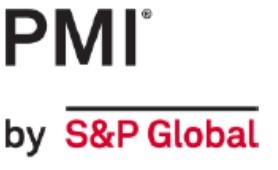The global PMI compiled by J P Morgan using the data from S&P Global slipped into negative territory at 49.8 and this is a theme that characterises this months’ round of reporting. Output contracted at its fastest pace since April when Chinese lockdowns hit the global total and if you take out the pandemic period, this was the weakest result since 2012. New orders were also falling sharply in September.
The UK PMI actually picked up a little compared to August but at 48.4, it was in negative territory for the 3rd consecutive month as output continued to fall in all three of the segments of manufacturing, including investment goods. Survey respondents reported a fall in orders from both home and export markets with weak global market conditions, rising uncertainty, high transport costs and longer lead times all factors behind this trend. Data collection took place from 12th-27th September, so most of it was before the fall-out from the Chancellor’s fiscal event on the 23rd.
For the Euro-zone (a weighted figure for 8 economies) the PMI was also negative for the 3rd month in a row but in this case the September reading of 48.4 is the weakest of these three. The region saw output falling at around the same rate as in August but the pace of decline in orders accelerated. Some industries saw production volumes lowered in reaction to higher energy costs while others were still reporting significant constraints from supply chain shortages. There was, however, a rise in employment, although this was at the weakest pace since February 2021.
Within the region, only Ireland had a PMI reading above 50 and although a direct comparison of numbers is not necessarily valid, it is significant that the lowest PMI readings were in France and Germany who both recorded their lowest PMI’s since the initial period of the pandemic. Germany had been negative in August but France slipped back under the crucial 50 level this month in a move that was shared with the Netherlands which had been leading the Euro-zone “league table” since the Spring. Only Italy, Greece and Ireland had an improvement in their PMI in September with the first two of these still below 50 despite that rise.
The only bright spot among the other EU countries is also a case of clutching at straws because although there was a significant improvement in the PMI reading for Poland this only took it to 43.0 and, therefore, still strongly negative. There was a substantial fall compared to August (the largest this month in our analysis) for Hungary which took this often volatile trend to below 50 for the first time since March 2021; a more modest reduction in Sweden also took them back to a negative reading and the already negative figure for the Czech Republic weakened further.
Outside of the EU there was a small improvement for Switzerland which, at 57.1, has the strongest PMI reading for September but Turkey slipped further into negative territory.
Turning to Asia, only the ASEAN group of countries saw an improvement in their PMI reading compared to August and they remain in positive territory along with India (the strongest in the region) and Japan despite both of these recording a weaker reading. China, South Korea and Taiwan all slipped further below the crucial 50 level with the latter now having the lowest overall figure of 42.2 in this analysis.
The most positive news – and this is a relative term because its not that great – comes in the Americas with the USA, Canada and Mexico all recording an improved PMI compared to August although with different outcomes. Mexico had the strongest increase in this analysis which just moved them into positive territory but the rise for Canada was not enough to repeat this move for them. Brazil had a lower PMI than in August but remained positive.
Overall, of the 27 countries/regions that we report upon, 15 saw the PMI reading lower than in August and 11 had an improvement, with Austria unchanged. However, a more telling fact is that only 9 were above the crucial 50 level which implies that activity in the manufacturing sector is expanding.
The S&P Global PMI reports for major economies around the world are available from their website at https://www.pmi.spglobal.com/Public/Release/PressReleases and our summary charts report is available to download below. You should note however, that the PMI readings for Hungary, Sweden and Switzerland are compiled independently and not on this site but they can be found with an appropriate internet search.

